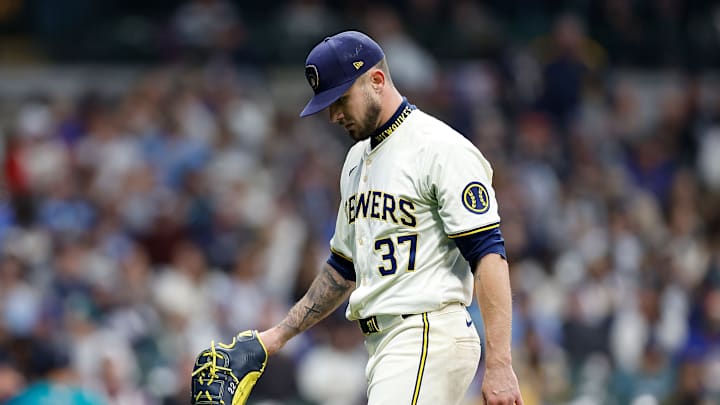Let's face it, DL Hall has had a less-than-promising start to the new season, with three starts (12.2 innings pitched) resulting in a 7.11 ERA. Understandably, Brewers fans have voiced their concerns, with numerous "keyboard ninjas" across social media calling for his removal from the rotation or even his release. However, I'm here to calm the tide and explain why giving up on DL Hall would be premature.
I think it's worth recalling that Hall was acquired by the Brewers in the Corbin Burnes trade, indicating the organization's belief in his potential as a key rotation piece. This was echoed by Brewers’ Manager Pat Murphy in an interview with Jack Magruder from MLB.com:
“This kid has a chance to be in the top end of the rotation for a long time... I believe in this kid, I really do. He is super talented. But pitching is like playing good music. You have unbelievable spots here and there, but the total show isn’t complete until you have years and years of experience… I think this is going to be a process with DL. He'll show flashes of greatness, but we can’t expect him to go out and just dominate. That’s not practical right now.”
Murphy's quote illustrates his confidence in DL Hall and acknowledges that he's a work in progress. While some may argue that faith in Hall doesn't change his current performance, it's essential to remember the Brewers' track record with developing project pitchers. Former Brewers' Cy Young winner Corbin Burnes struggled early in his career, posting an 8.82 ERA in 2019 at the age of 25, the same age as DL Hall.
Now, one might wonder, why do the Brewers have such faith in Hall? For those who follow prospects, DL Hall is a familiar name, he was once considered a top 100 prospect before 2022. A significant factor behind this status is Hall’s impressive pitching repertoire.
The cornerstone of any pitcher's arsenal is a quality fastball, and despite a dip in velocity this season (from an average of 95.6 MPH last year to 92.4 MPH), Hall's fastball remains intriguing due to its release extension, which ranked in the 92nd percentile last season. This extension creates the illusion of increased velocity and a flatter vertical angle, ideal for a high "rising" fastball, a trait he shares with Brewers’ ace Freddy Peralta.
In addition to his fastball, Hall's secondary pitches show promise. Scouts have praised his slider for its late and sharp horizontal movement, complemented by downward action. His changeup, typically 8-10 MPH slower than his fastball, boasts a respectable vertical break, while his reintroduced curveball has also garnered positive reviews.
DL Hall, Filth.
— Rob Friedman (@PitchingNinja) March 28, 2022
100mph Fastballs and a Wicked Slider. pic.twitter.com/wd9vp5jOed
Hall's dip in velocity to start this season is not good. However, it is expected considering he is moving back to a starting pitcher's role. Overall Hall's struggles in the MLB have primarily been command-related, but his repertoire of four statistically above-average pitches makes him a compelling young pitcher for the Brewers. The focus now is on refining his command, a task the organization has successfully undertaken with many pitchers.
In conclusion, it's premature to give up on DL Hall. While there may be struggles and frustrations, the only way for him to improve is by gaining more experience in the big leagues. As legendary pitcher Dwight Gooden once said, “You got the ball in your hands and you’re in command, and if you get your pitch where you want it, nobody’s gonna hit you.” With time, guidance, and improved pitch command, DL Hall has the potential to become a staple in the Brewers' rotation.
